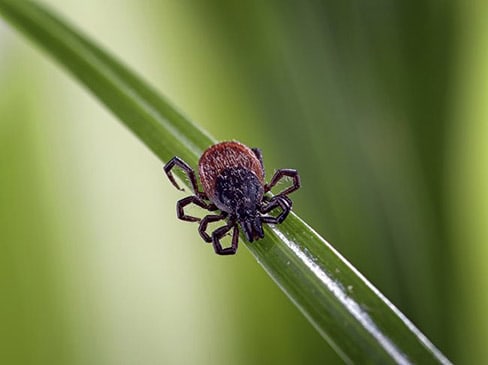Spring is in full bloom and so is the tick population throughout the country. TruGreen®, the nation's leading professional lawn care company helping people live life outside, is releasing our first list of the U.S. cities most bothered by ticks.


Spring is in full bloom and so is the tick population throughout the country. TruGreen®, the nation's leading professional lawn care company helping people live life outside, is releasing our first list of the U.S. cities most bothered by ticks.
As Incidence of Tick-borne Illnesses Rise[1], TruGreen Offers Tips on How Consumers Protect Themselves and Keep Ticks Out of Their Yards

Spring is in full bloom and so is the tick population throughout the country. TruGreen, the nation’s leading professional lawn care company helping people live life outside, is releasing their first list of the U.S. cities most bothered by ticks.
Ticks can transmit disease and cause allergic reactions in both people and pets. For the first time, TruGreen is breaking out data on cities bothered by ticks because of the rising prevalence of tick-borne illnesses including Lyme disease and Rocky Mountain spotted fever.
According to the Centers for Disease Control and Prevention, each year more than 30,000 cases of Lyme disease are reported nationwide, and studies suggest that the number of people diagnosed with Lyme disease is closer to 300,0001.
Based on TruGreen sales and service data, customers in these cities are most bothered by ticks in the U.S.:
Many people believe that ticks do not survive the winter, but ticks are extremely resilient and seek shelter in decaying foliage until temperatures rise,” said John Bell, board certified entomologist and TruGreen regional technical manager.
“As people head out into their yards to enjoy life outside this spring, we know protecting family and friends from disease-carrying insects is a priority. Our TruShieldSM service targets ticks where they live and kills the immature larvae and nymph stages and adults to reduce the number of ticks in your yard.
People should be aware that ticks could be in the areas where they live, work and play, regardless of the number of ticks this year. Everyone should take steps to help protect themselves and their loved ones, including pets.
While not all ticks carry the same diseases, ticks can be found in every state.
Lyme disease risk is focused in the Northeast, mid-Atlantic, and upper Midwest, with pockets of lower risk along the west coast. However, the range of the tick that transmits Lyme disease also is expanding. While nearly 95 percent of Lyme disease cases occur in 14 states: Connecticut, Delaware, Maine, Maryland, Massachusetts, Minnesota, New Hampshire, New Jersey, New York, Pennsylvania, Rhode Island, Vermont, Virginia, and Wisconsin, infected ticks can also be found in neighboring states and in some areas of Northern California, Oregon and Washington.
Other less known, but serious tickborne diseases include Rocky Mountain spotted fever, anaplasmosis, ehrlichiosis, Powassan virus, and babesiosis. These diseases tend to be concentrated in specific parts of the country. Babesiosis and anaplasmosis occur in the same areas as Lyme disease—mainly in the Northeast and upper Midwest. More than 60 percent of Rocky Mountain spotted fever cases occur in five states: Arkansas, Missouri, North Carolina, Oklahoma, and Tennessee.
For more information on how to protect yourself from ticks while enjoying time outside, visit www.trugreen.com.
The list of cities most bothered by ticks was developed by TruGreen based on an analysis of customer sales and service data from January 2017 to December 2017.
Sources:
[1] “Lyme and other tickborne diseases.” Centers for Disease Control and Prevention, April 12, 2018. https://www.cdc.gov/media/dpk/diseases-and-conditions/lyme-disease/index.html
[2] “Stop Ticks.” Centers for Disease Control and Prevention, June 19, 2017. https://www.cdc.gov/features/stopticks/index.html

Facebook
X
Youtube
Copy Link
Email